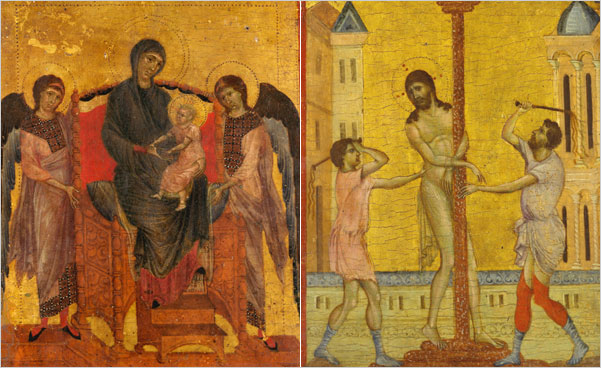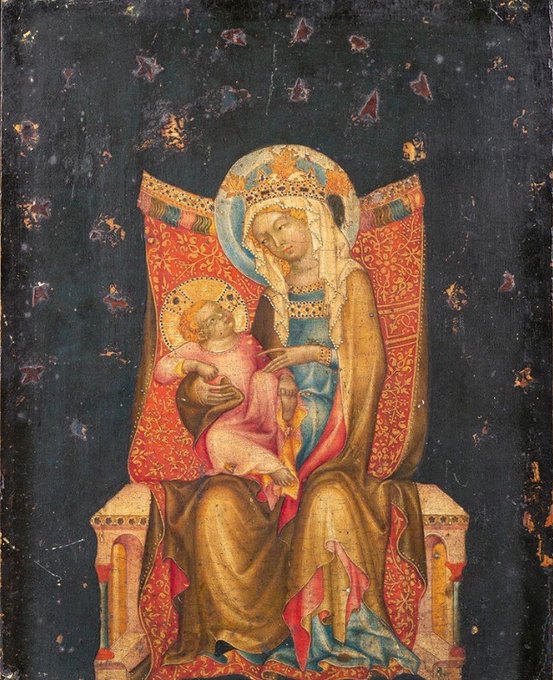 |
| Cimabue, Christ Mocked, c. 1280 |
This post has nothing to do with the art of medieval Hungary, but the information presented below is so fascinating that I decided to create a small post about it. New started circulating this week about the discovery of some spectacular medieval paintings, which had been hitherto unknown. The most famous discovery concerns a small panel attributed by Cimabue, which was found hanging in the kitchen of French woman. The painting will be auctioned by Acteon in Senlis on October 27, with an estimate of 4 to 6 million Euros.
The small panel depicts the Christ being Mocked and was identified as part of a dismembered small altarpiece. Its reconstruction shows a diptych, with four small panels on each wing. So far, two other paintings of the left wing have been known: the Virgin and Child Enthroned with Two Angels at the National Gallery, London and the Flagellation of Christ at the Frick Collection. The two panels have been exhibited together at the Frick Collection in 2006. The newly identified painting dates from around 1280, along with the dismembered former altarpiece.
 |
| The Cimabue panels in London and New York |
Also discovered in France, the second painting originates from Central Europe. It is a small panel of the Virgin and Child, attributed to one of the most famous – but anonymous – masters of medieval Czech painting, the Master of Vyšší Brod. Active in the middle of the 14th century, the master received his name from the altarpiece now preserved in the National Gallery in Prague. The background of the small panel has been repainted but could be cleaned and restored by a potential buyer (see the image in the article in La Tribune l’Art). The painting will be offered for sale by Cortot & Associés in Dijon, on November 30, with an estimate of 400.000 to 600.000 Euros.
 |
| Master of Vyšší Brod, The Virgin and Child, c. 1350 |




:strip_icc()/BHG_PTSN19720-33d9cd22f6ab49e6a21982e451321898.jpg)

More Stories
Gurney Journey: USA Today Recommends Dinotopia
“From Generation to Generation…” — A Sanctified Art
The Public Theater’s Under The Radar Festival Lights Up NYC This January